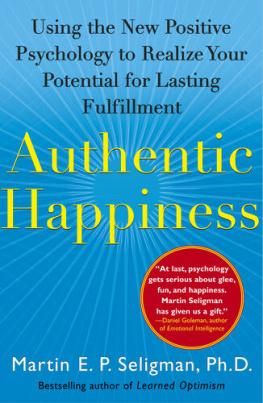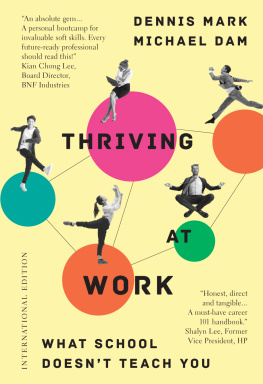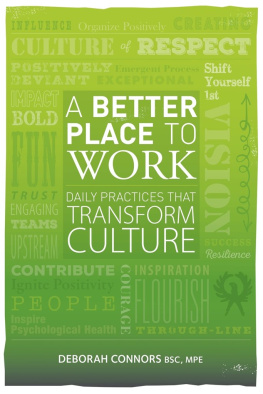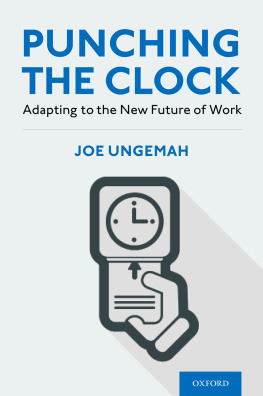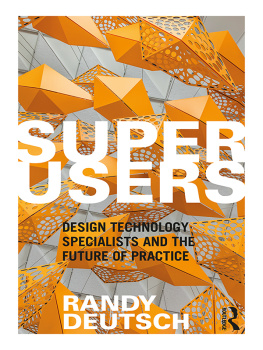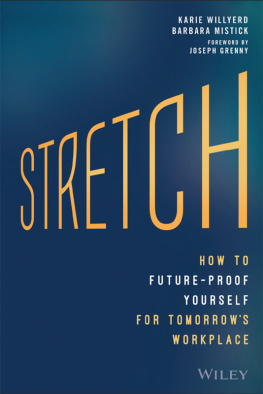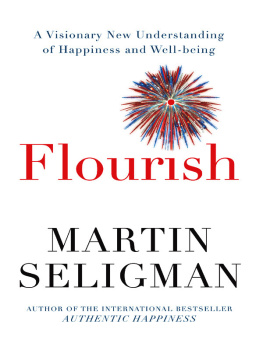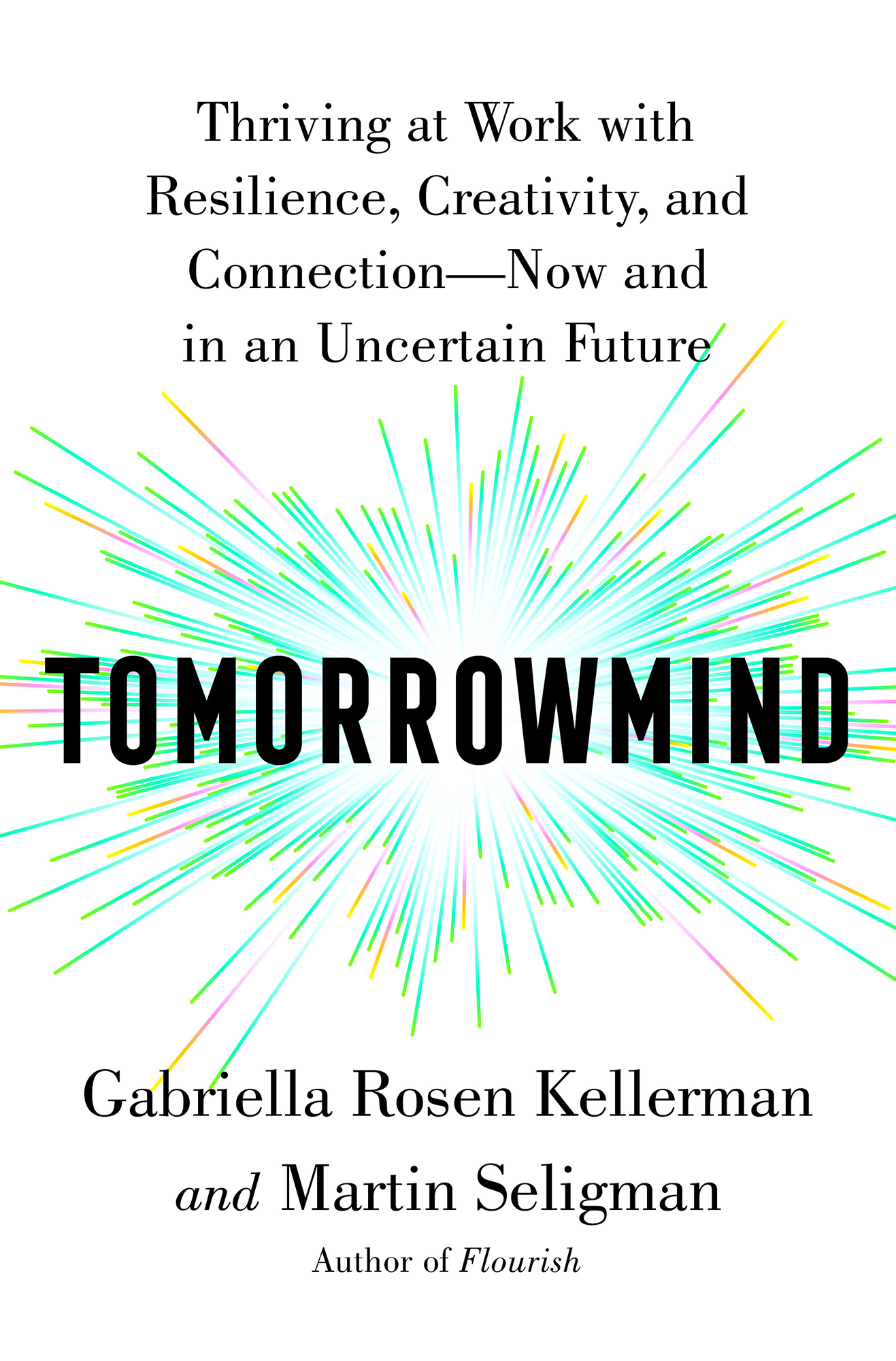Contents
Guide
Thriving at Work with Resilience, Creativity, and ConnectionNow and in an Uncertain Future
Tomorrowmind
Gabriella Rosen Kellerman and Martin Seligman
Author of Flourish
For Jesse
Gabriella Rosen Kellerman
In Memory of Aaron Temkin Beck (19212021)
Mentor, Friend, and Model
Martin Seligman
Introduction
L ong before he became the human error, before computers had even entered the picture, plan A, for Graeme Payne, was the army.
Graeme grew up middle class in Christchurch, New Zealand, in the 1970s, the oldest of three. As a boy hed relished structured activities that required him to master new skills. Rugby, an early passion, remains a pillar of family activity for Graeme and his own sons today.
In high school, Graeme joined the Army Cadets, where he quickly rose up the ranks, his discipline drawing the admiration of peers. He also nurtured a love for tinkering and building. When Ferrymead, a local historic park, received the gift of a massive anti-aircraft gun, he recruited friends to help restore it. The gleaming gun complete, Graeme used the efforts success to launch the founding of a military museum.
Not every idea met with success. A renegade foray into bagpiping ended swiftly.
Graemes father was an accountant, and so it was unsurprising when Graeme demonstrated a propensity for numbers. Thinking back, he recalls that it wasnt the math that interested him most about accounting. It was the learning. Every audit process began with discovery, the need to quickly and thoroughly understand the inner workings of a businessthe flow of activities, the systems of production. Only then could you get down to numbers. Deep learning was what he loved and took to naturally. The spreadsheets, he didnt mind.
For years Graeme had planned to enlist after high school. Right before he left, however, he caught wind of a university scholarship offered by the accounting firm Arthur Young (known today as Ernst and Young). On a whim, he appliedand won. He accepted the scholarship while joining the army reserves to earn his basic training units.
Ive always embraced change, he says, reflecting on this formative, sudden pivot. What the heck? What have you got to lose?
Change was already coming, like it or not, for him and many other New Zealanders. After decades of agricultural boom, on the backs of which New Zealand enjoyed one of the worlds highest standards of living, its long-standing wool, meat, and dairy economy had begun to wane. In its place, alongside manufacturing, the newer services sector was on the rise. Today, services account for 60% of the GDP in Canterbury, the region surrounding Christchurch.
Big changes were coming to the field of accounting, too. When Graeme started as a financial auditor for Arthur Young in Christchurch, there was a single IBM PC serving the whole office. Within a few years, each person had a so-called luggable at their desk. Older partners viewed the newfangled gadgets with suspicion, as gimmicks rather than time-savers. They preferred their word processorsnot the electronic kind, but human beings, typically women, who would type up recorded voice memos.
Graeme, by contrast, embraced new technology. He took pleasure in understanding how the machines worked, using their programs to build graphs, lightening his workload with software that could perform calculations faster and more reliably than he could on his lined yellow pads. He spent hours teaching himself the basics of computing from books.
I was an early adopter, he says, a half smile emerging. I even had the Apple Newton.
Ever the leader, Graeme did his best to help others around him adapt. He and a colleague produced an instructional video on how to use a PC, which they mailed to the homes of partners for viewing on their personal VCRs. In time, Arthur Young came to value Graemes proficiency. They asked him to create a computer training program for all of New Zealand. He did, and for the most part it worked, though some older partners continued to struggle. Graeme recalls one who, well into the email era, would have his assistant print out then read aloud each email message as it arrived.
Even for Graeme, the pace of change could be hard to keep up with. But he understood what was at stake: the very future of the firm. Outside the walls of Arthur Young, computers were rapidly transforming the businesses of its corporate clients. Auditing now meant understanding how this new technology was being incorporated into practices like data storage, payroll, and analytics. The credit industry, for example, had for a century relied on paper records: first notebooks, then storehouses full of file cards. The 1960s brought a shift to electronic records. By the 1970s and 80s, everything was on a mainframe, housed in a data center. In those days, keeping the records safe meant restricting access to these centers. A guard at the door, say, or a heavy-duty padlock.
Enter the internet.
Seemingly overnight, the world of security was turned on its head. Hackers created computer viruses that tore across unprotected networks, wreaking havoc. The threat to global industry was immediate and existential, and an entirely new sector sprung up to meet it: information security. In 1995, Citibank hired Steve Katz as chief information security officer, believed to be the first CISOpronounced SEE-soin history.
Graeme saw potential in the chaos. This new information security Wild West needed tools, and he had ideas. During a stint in Auckland, Graeme built a product called Advisor that could flexibly analyze different types of computer systems. At a meeting in Singapore, a like-minded US partner quickly grasped the products value and invited Graeme to the United States to work on it. Curious, open-minded, and hungry, Graeme moved eight thousand miles first to Cleveland and then to Atlanta, to open Ernst and Youngs inaugural security consulting practice. He was not yet an expert in the fieldbut then, no one was. The tides were shifting too quickly, the problems too new for old wisdom. A wave of opportunity was cresting. Graeme grabbed his surfboard and rode.
Today the CISO is a standard position at any major corporation. Forty-one percent of corporate boards see cybersecurity experience as a key qualification for overall directorship. By 2024, the cybersecurity market will reach $300 billion. A worldwide shortage of cybersecurity professionals means 2.9 million positions sit unfilled, while financial losses due to cyberattacks are growing 62% annually, a loss of $1 trillion in 2020 alone.
By 2011, Graeme was ready for a new kind of change.
Now he was an expert in his field. Hed been traveling the world as a security consultant for fifteen years, and life as a road warrior was beginning to grind him down. His two boys at home in Atlanta needed more guidance in their many (structured, skill-based) activities.
When the offer came to join Equifax as vice president for IT risk and compliance, he jumped. Here was exactly the type of stable, in-house role he was craving. Though the firm was mature, there was still plenty of building and fixing to be done. By 2017, Equifax held records of one billion consumers, one hundred million small and medium businesses, one hundred million employees, $20 trillion in property data, and $20 trillion in wealth data. That August, during an address at the University of Georgia, CEO Richard Smith put it this way: If you think of the largest library in the worldthe Library of Congresswell, Equifax handles twelve hundred times that amount of data every day.

